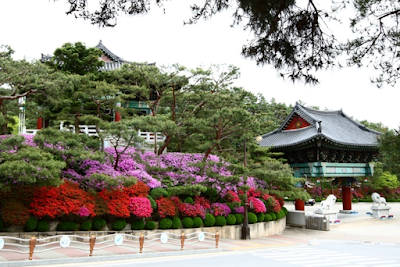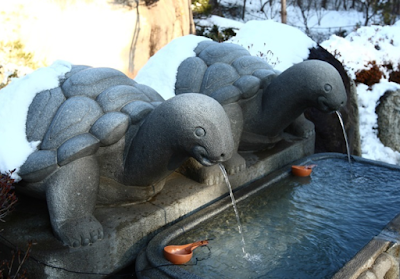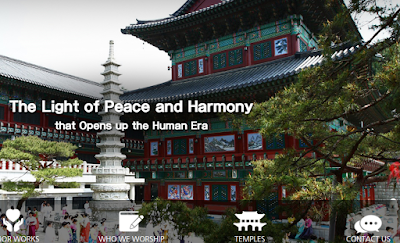One of the buildings of Daesoon jinri hoe welfare foundation in Yeoju
The History of Daesoon jinri hoe
Daesoon jinri hoe (the Fellowship of Daesoon Truth) is one of the religions of Korean people. The religion of 'Korean people' might refer to the one which is contrary to global religion, but it does not mean the confined to the specific area. In other words, Daesoon jinri hoe is a religion of the universal concept, roooted in Korean history and culture.
To realize the historical context of Daesoon jinri hoe, it is required to unerstand its religious lineage.
The predecessor of Daesoon jinri hoe is known as Taegeukdo, which was called Mugeukdo before, but An Introduction to Daesoon jinri hoe describes its history in terms of not the transition of the religious bodies but that of the religious lineage from Sangje Kang(1871~1909), Doju Jo Jeongsan(1895~1958) to Dojeon Park Wudang(1917~1996)
Daesoon jinri hoe believes that the Lord of Ninth Heaven or Sangje(Jeungsan), Doju (Jeongsan), and Dojeon (Wudang) played a certain role. That is, Sangje declared the Great Dao of mutual beneficence and set a stepping stone for the Later World by practicing the gongsa (the Reordering of the Universe); Doju solidified the religious orthodoxy and created the principles of Dao th open the Later World; Dojeon propagated the principles that Doju had built.
The Theology of Daesoon jinri hoe
Jeungsan said that He would practice the reordering of the universe Himself with great authority of the Three Realms. The entity who can reorder the principles of heaven and earth with holding the great authority must be the Most High God of the universe. In other words, the faith of Daesoon jinri hoe starts from believing in a human Jeungsan as the Most High God, based on the reordering of the universe, which is His unique religious theology.
<The Tenets>
The first one of the four tenets, which are the core doctrines of Daesoon jinri hoe, is "The harmony of yin and yang". It has a limitless range that can be applied to, including gender equality, resolution of the social polarization, racial or international reconciliation, harmony between mankind and nature or human beings and divine beings, balance between material and spiritual civilization, consistency of speeech and action, harmony of tunes, etc.
The second tenet is "The harmonious union of divine beings and human beings". It refers to a new model of relationship between human and divine beings. Since the civilization was weighted towards materialism, it has fostered arragance among people. And they have become so insolent that they even have an ambition to conquer nature. This leads to undermining the authority of gods, who are, eventually, neglected and excluded by human beings. Daesoonjinrihoe believes that this is a serious problem which crucially causes the confusion of the fundamental principle, order or operation of the universe. Therefore, Daesoonjinrihoe emphasizes on recovering the relationship between human and divine beings. Of course, it means the harmony between humans and gods, not the blind obedience or neglilgence to gods.
The third tenet is "The resolution of grievances into mutual beneficence". It can be viewed from two perspectives. First, at the perspective of cosmology, it refers to a great change of the universe, in which all the grievances cumulated from the ancient times shall be resolved into mutual beneficence in the Later World due to Sangje's reordering work of the universe. Secondly, at the perspective of practical cultivation, the tenet signifies that each individual must resolve the accumulated, old grievances and advantace to mutual beneficence.
The fourth tenet is the stage of unification with Dao. It refers that an individual becomes a perfect being and reaches the state of omniscience and omnipotence by oneness of the individual and the Dao. The stage of unification with Dao can be achieved by anyone, regardless of race, social class, or the number of people. When a person wins it, the Later World shall begin by opening a door to an entirely new world. And every being in the ecosytem shall acquire a new life and destiny, and the sick earth shall be transformed into a new one. This is all attributed to the reordering of the universe that Sangje practiced. In conclusion, the stage of unification with Dao is a concept that indicates the perfect state of both human beings and the world.
The source of this writing is "The history and theology of
Daesoonjinrihoe" written by Daesoon Institute of Religion and Culture











































